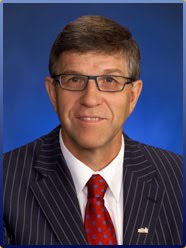“What I really want to know,” a comment on a post says, “is what happened in your home town of St. Albert?”
The short answers are easy. The analysis is a little harder. But it may contain useful tidbits for candidates and campaign managers eyeing municipal elections in suburban Alberta communities, indeed, suburban communities anywhere.
Easy answers first: Mayor Nolan Crouse was overwhelmingly reelected, exactly as predicted.
Your blogger’s record on predicting the success of a field of 13 council candidates, of course, was more mixed. Like a lot of Canadian communities, St. Albert elects its city councillors by block voting. There are six spots and each elector may vote for up to six candidates. The six with the most votes win and the rest are history.
In the public prints, I predicted only that the four incumbents who were running would all be re-elected, largely on the strength of name recognition. In the event, I was half right. Len Bracko, a former Alberta Liberal MLA with deep roots in St. Albert’s significant community of Liberal voters and great respect among many others, was re-elected. So was Roger Lemieux, who has strong connections to St. Albert’s historical francophone community and ran a business here for many years. But both could be fairly described as having scraped back into office.
James Burrows and Gareth Jones were swept away, presumably the result of voters dissatisfied with St. Albert’s high taxes relative to those in other Edmonton-area communities, but perhaps because of other factors too. Burrows was controversial, disliked by more than one group of voters. This setback will do no good to his reported plan to seek St. Albert’s Wildrose Alliance nomination for the next provincial election. It is harder to pinpoint a single reason for Jones’s lack of success.
Now, it is dangerous to read too much into these things. Most St. Albert candidates, incumbents or not, ran lazy, uninformative campaigns. Those who got out and door-knocked won seats.
Can the St. Albert election be called a civic referendum on such local controversies as tax rates, the purchase of municipal art, the history of an expensive community recreation centre, the future of the public library or the uproar over the location of a Habitat for Humanity development? You could fashion almost any answer you like to such questions from the confusing data emerging from this election. No doubt folks of all persuasions will do just that.
Judging from the strength of the mayor’s majority over his only challenger, a neighbour of the controversial Habitat development, the brouhaha that generated national headlines did not stir many local voters.
So here are some quick observations and opinions about the meaning of the St. Albert election results, in no particular order
— The Habitat brouhaha didn’t have much impact on most voters, and there were at least as many people embarrassed by the affair as upset by it. I say that votes flowed both ways as a result.
— As in most communities, taking a hard line on taxes is an overwhelming issue for a significant group of voters, but not a majority. The candidate most closely associated with the local “Taxpayers’ Association” did well. Supporters likely “pumped” their ballots by voting only for one candidate, an entirely legitimate technique in my opinion.
— Low turnout helps special interest groups — including anti-tax cherry pickers — willing to pump for a single candidate. As noted, the turnout of eligible voters in this election, typical of municipal elections across Canada, was at 34 per cent pathetically low
— St. Albert voters — and not just women — want women on council. They considered the three female candidates, concluded one was the strongest, and made absolutely certain she was elected. Cathy Heron topped the polls with close to 10,000 votes.
— Door knocking counts. As noted, candidates known to have actually gotten out to meet voters did better.
— Social media did not have a particularly big impact. Who knows, maybe there are just not enough young people in St. Albert? Maybe the pundits are misinterpreting the impact of social media in the Calgary election. Maybe things like that only happen in big cities. Whatever is going on, candidates who tried to use social media sites heavily did not do particularly well.
— Money alone will not buy an election — at least not in St. Albert. A candidate named James Van Damme spent a heck of lot on advertising over a very long time. It didn’t get him past the No. 10 spot on a list of 13 candidates.
— Age does not seem to be a particular factor. Voters turfed one candidate in his 70s and kept another. They elected people in their middle years, plus one younger candidate. They rejected the youngest ones. So if you’re young, or old, and you have good ideas, you should run!
— Signs matter. When you door-knock, voters often complain about “sign pollution.” But they tend to vote for candidates with lots of signs. It seemed to me that some candidates who had a lot of signs last time had fewer this time. Candidates with many signs did well. Incumbents who had fewer signs than in 2007 saw their vote totals slip.
— Notoriety gets you about 6,000 votes in this town, which happens to be home to about 60,000 people. There may be a nice neat formula in this for the managers of suburban electoral campaigns. If merely being a council incumbent gets you about 10 per cent of the vote, you’d better get out and knock on doors, go to events, talk to journalists, put up signs, buy advertisements, persuade your friends to pump the ballot and be responsive and respectful when it comes to voters’ concerns if you expect to be re-elected. In other words, run as if you were in third place!
A longer version of this post with information of local interest can be found at David Climenhaga’s blog, Alberta Diary.




